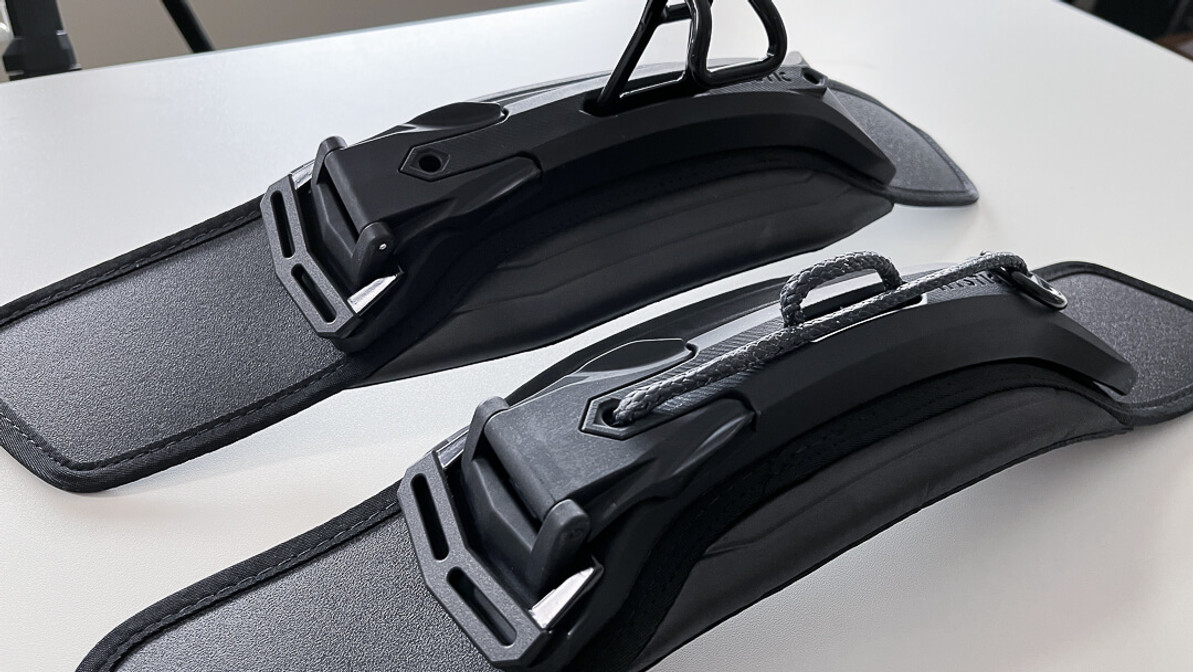3 Must Have Kiteboarding Harness Accessories

So you’ve purchased your harness and are ready to hit the water, right? Before you do, here are 3 important accessories to make sure you have with you.

Kiteboarding Hook Knife
Every kiteboarder should have a hook knife with them when riding. For when you get jumped in the parking lot by jealous surfers? No, rather for that one-in-a-million situation that you get tangled in your lines.
Most harnesses come with a hook knife provided - verify yours does. If not, make sure to pick one up. Spreader bars often have a Velcro sleeve to accommodate the knife or you can purchase one with a pouch to attach to your harness straps. Make sure you know where it can be located on your harness to the point of instinctively being able to reach for it. Have a friend yell “safety knife” - you should be able to find it in one second.
This $15 accessory may just change your life (by saving it)!


Kite Safety Leashes
Safety, or bypass, leashes are included with most kite control bars. This is what connects from your harness to the flagging line on your kite, and makes sure your kite doesn’t blow away if you deploy your safety. Safety leashes are available in either long (for people who like to unhook) or short (for everyone else).
I recommend checking out the metal hook a few times a year to make sure it hasn’t bent or is fatiguing, and always make sure to have a spare tucked away in your car on that off chance you lend yours to someone on the beach and forget to get it back!

Kite Harness Spreader Bar Conversion Kits
Most spreader bars these days are able to be converted to either hook or rope. While you can always purchase a second spreader bar, the most affordable option is to purchase a spreader bar conversion kit. Brands such as Mystic, Manera, Ride Engine, and Ion allow you to simply unscrew a few bolts on the rear of the spreader bar and swap between a hook and a rope.
This means you can throw down in the morning with your hook, and in the afternoon swap to a rope for when the waves build. I generally prefer a hook for freestyle tricks (and for unhooking a hook is a must), and a rope for surf and foil, the rope allowing the chicken loop to slide and pull at more extreme angles without pulling your harness with it.
Thank you for connecting with us, my friend. Please reply back with any questions that you may have. We're always happy to help!
Thank you, and good winds,
Jake Mitchell
Related Links:
Subscription Links:
Click Below to Contact Us:

Young Mitchell tunes out to:
Recent Posts
-
2025 KT Ginxu Super K Review | Why This Isn't Last Year's Board
Mid-length, or "midi" boards, have gained a lot of traction in the past couple years. They're ve …1st May 2025 -
Light Wind Kiteboarding Magic? The Reedin WhisperModel Might Be the Answer
Jeff from MACkite had a chance to meet up with Kevin Langeree of Reedin in Cape Town, South Afri …22nd Apr 2025 -
Hot New Releases: MACkite Brand Parawing & Mystic Majestic Ex Custom Harness
MACwing v.5 Beta Single Skin Single Use Jake and Ryan from MACkiteboarding unveiled an excit …1st Apr 2025




